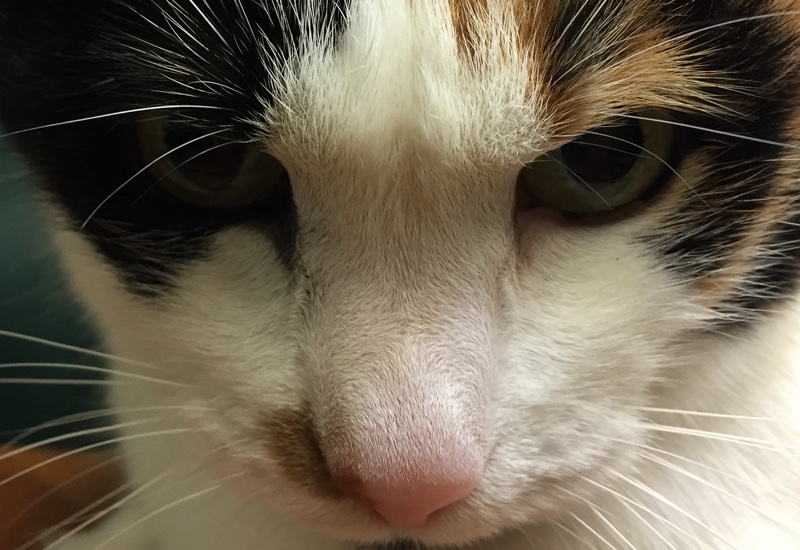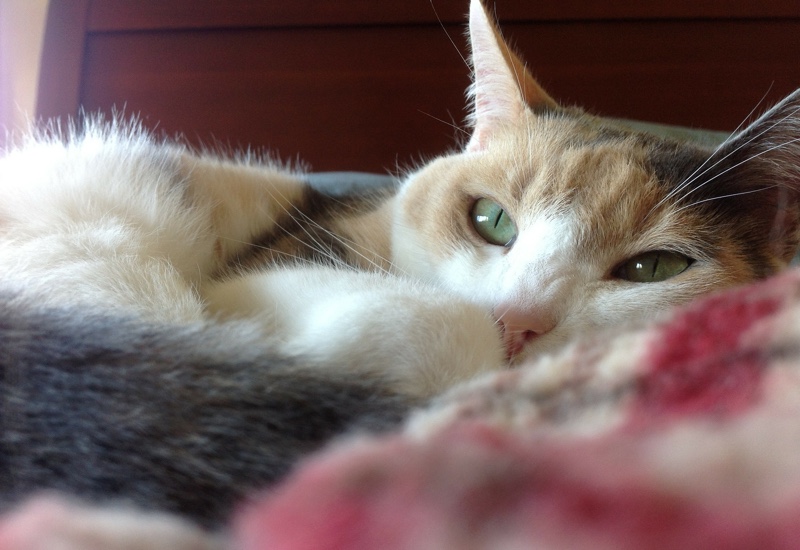What You Need to Know About Dogs and Poop
Your pup’s excrement can be a good indicator of their overall health
Full disclosure first: I am a Calico cat parent, and I love my sweet whiskered girl, Callie! What’s not to love? That unique, eye-catching fur coloring and quirky nature (OK, that part may not be determined by my cat’s Calico-ness, but we’ll get to that later)—these are just a couple of reasons my heart goes pitter-patter for my Calico cat.
I had fun compiling these Calico cat facts and even learned a thing or two myself. I hope you enjoy them too!
Let’s start with the basics, including a little bit of background on why Calico cats are the way they are and why they’re almost always female.
The first thing you should know is that “Calico” is not a breed of cat. You can check the Cat Fancier’s Association list of breeds, but you won’t find it listed there.* A number of breeds, including American Shorthair, Japanese Bobtail, and Persian to name a few can have a calico coat color.
What sets Calico cats apart is their tri-color coat. Calico cats have at least three colors in their fur, which at their most basic are white, orange, and black. However, variations on these colors, such as cream, blue-black, reddish, brown might also be noted in the coat of a Calico cat.
Calico cats are sometimes mistaken for Tortoiseshell cats or Torties and vice versa. Torties are similar to Calicos in that they have black and orange coloring. However, Calicos are usually mostly white with patches of color, while Torties typically have a mainly brownish coat with streaks of colors and almost no white.

Calico cats are predominantly female because their coloring is related to the X chromosome. I’ll try not to put you to sleep with a complicated genetics lesson, so here’s a quick overview:
However, there is an exception. In rare cases, cats can have an extra X chromosome making them XXY. These cats present as male, but can be Calico because they have two X chromosomes. This XXY configuration can cause Klinefelter’s Syndrome, which is a health issue we’ll get into later. These cats are also sterile and can’t be used to breed other Calico cats.
On a side note, please keep in mind that even sterile male cats should be neutered. Although they can’t produce unwanted litters, this procedure provides them with important behavioral and health benefits, such as preventing testicular cancer and unwanted territorial spraying.
While nobody knows for sure where Calico cats originated, it’s thought that they were initially found in Egypt. From there, they may have been brought down along the Mediterranean to port cities in Italy, Spain, and France. Today, you can find Calico cats all around the world—including the one typically napping in a sunny windowsill at my house.
Remember that Calico refers to coloration, not a breed. With that in mind, a Calico cat’s personality will most likely be determined by breed and other factors, such as their experiences and environment, just like any other cat.
That said there are plenty of anecdotal stories claiming that Calicos are a sweet, warm-hearted, and loyal lot. On the flip side, they’re also said to be smart, spunky, and notoriously independent with a proclivity for quirky traits and behaviors.
As an example of quirky, I can tell you that my Calico cat is crazy for water. As soon as I start running a shower, she’s there meowing for me to let her jump in. She also drinks right from the bathroom sink with her head under the faucet. When she’s done, she enjoys settling down in the sink for a warm, damp snooze.
Being Calico doesn’t affect the longevity of a female cat’s life. Many healthy cats can live to be around 15 years old or more. Of course, every individual cat is different, and this rule of thumb doesn’t apply to male Calico cats.
Unfortunately for these tri-colored guys, they often suffer from Klinefelter’s Syndrome because of their XXY chromosomes. This condition can negatively impact their health and result in shorter lifespans. Some problems associated with Klinefelter’s Syndrome include:
It’s possible for male Calico cats with Klinefelter’s Syndrome to lead full and happy lives, but they may require special care to help deal with these issues.
If you have a healthy female cat without Klinefelter’s Syndrome, you can care for her like you would any cat. For instance, brush her regularly to keep her colorful coat in great shape and take her to the veterinarian for yearly check-ups and routine preventive care, like vaccinations.
You might also want to consider a cat insurance plan for your Calico friend. Cat insurance can help you cover the expense of the wellness treatments your kitty will need over her life. It can also help you manage the costs of care in case of an accident or illness. Keep in mind that even cats who are kept inside can get hurt or sick.

Now onto some fun stuff! There are quite a few fun Calico cat facts to discover as these colorful felines have been known to take on many guises.
Calico cats became the official cat of Maryland in October of 2001.+ Officials chose them because their fur colors are similar to the Baltimore Oriole, which is the state’s official bird. You’ll notice that the Baltimore Orioles baseball team wears these very colors—black, orange, and white.
Calico cats are thought to bring good luck in Japan. In past years, Japanese sailors would travel with Calicos onboard their ships for protection. In the U.S. and U.K., male Calico cats have been thought to be especially lucky because they are so rare.
The maneki-neko or “the beckoning cat” is based on a Calico cat. This Japanese symbol goes back to the 1870s, and statues of it are still placed at the entryways of Japanese homes and business for good luck.
Calico cats have been called “Money Cats” in the U.S. because it was thought that they would fetch top dollar when sold. This is actually a myth, since male Calico cats are sterile and not useful to breeders who might be interested in buying them.
If you have a wart, a Calico cat can help you to get rid of it according to Irish folklore. This old wives tale claims that you can get rid of these unsightly bumps by rubbing them up against a Calico cat’s tail.
Fortunately, I’ve never had a wart, so haven’t had a chance to try this one out. In any case, I think I would stick to regular wart-removal medication!
If you have a new Calico cat at home, you need a name. There are lots of directions you go in when you’re thinking about names for Calico cats. For instance, you can give them a name that reflects their fall colors or fur patterns, like Autumn, Speckles, or Patches.
You could also go with something related to their history, such as Cleopatra or Lucky. Or you could hint at their personality with something along the lines of Sweetie or Sassy. This list of names for Calico cats can help you get started:
There’s a lot to love about Calico cats. Believe me, I know—mine is purring contentedly and snuggling up next to me on the couch right now.
*The Cat Fancier’s Association list of cat breeds
+Calico as Maryland’s State Cat
(opens new window)